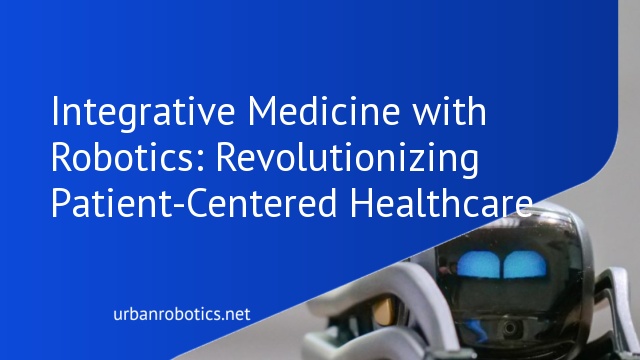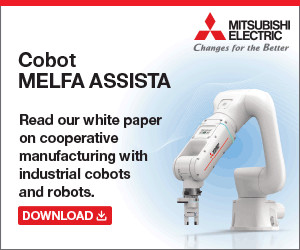Understanding Integrative Medicine
Integrative medicine combines conventional treatments with alternative therapies for comprehensive patient care. This approach emphasizes treating the whole person, not just the disease.
Key Principles
Focus on patient-centered care. Integrative medicine considers the patient’s lifestyle, emotions, and physical health. Utilize both conventional and alternative therapies. Integration happens through evidence-based practices like acupuncture, massage, and nutritional counseling. Emphasize preventive care.
Benefits and Applications
Enhance treatment effectiveness. Combining therapies often leads to better outcomes. Improve patient satisfaction. Patients report higher satisfaction rates when receiving integrative care. Expand accessibility to diverse treatments. Include surgeries, rehabilitation, and mental health therapies facilitated by modern robotics.
The Role of Robotics in Healthcare
Integrative medicine encompasses various treatments, and robotics plays a crucial role. By leveraging advanced technology, robots enhance precision and efficiency in healthcare.
Advancements in Robotics
Robotics has seen significant advancements in AI, machine learning, and sensor technology. These developments have led to more sophisticated robots capable of performing complex tasks. For instance, surgical robots now execute minimally invasive procedures with high precision. Rehabilitation robots, which assist patients in physical therapy, have also become more effective due to enhanced algorithms and sensors.
Common Robotic Applications
Robots perform a variety of tasks in healthcare, improving outcomes. Surgical robots assist in delicate procedures, reducing recovery times. In rehabilitation, robots help patients regain mobility through consistent, guided exercises. Diagnostic robots analyze data to aid in early disease detection, while telepresence robots enable remote consultations, broadening access to care. Each of these applications demonstrates robotics’ impact on integrative medicine, facilitating comprehensive treatment strategies.
Integrating Robotics into Medicine
Integrative medicine gains significantly from robotic advancements, enhancing precision and comprehensive care. Here, we delve into how robotics are being utilized.
Case Studies
Successful case studies exemplify robotics’ role in integrative medicine. One prominent example is the use of the da Vinci Surgical System for minimally invasive procedures, significantly reducing recovery time and complications. Another study involves robotic exoskeletons aiding stroke rehabilitation, showing marked improvements in mobility. These case studies illustrate robotics’ potential to transform traditional medical practices into integrative, patient-centered approaches.
Current Implementations
Current implementations of robotics in integrative medicine span various specialties. Surgical robots like the da Vinci system enable precise, minimally invasive surgeries. Rehabilitation robots support physical therapy, providing tailored exercises to patients. Diagnostic robots utilize AI and machine learning to detect diseases early, enhancing preventative care. These implementations underscore how robotics integrates with both conventional and alternative therapies, elevating healthcare standards and patient outcomes.
Benefits of Integrative Medicine with Robotics
Integrative medicine with robotics offers numerous benefits by combining conventional and alternative healthcare practices with advanced technologies.
Improved Patient Outcomes
Robotics in integrative medicine significantly enhance patient outcomes. Surgical robots, for example, increase precision, reducing complications and recovery time. Advanced diagnostic tools identify diseases earlier, leading to more effective treatments. In rehabilitation, robotic exoskeletons provide personalized therapy, accelerating patient recovery. By integrating robotics, patients experience improved health and quality of life.
Enhanced Efficiency
Integrative medicine employs robotics to boost efficiency in healthcare. Automated systems streamline administrative tasks, allowing healthcare providers to focus on patient care. Surgical robots perform intricate procedures faster and with greater accuracy than traditional methods. Diagnostics robots analyze data rapidly, providing quick and accurate results. Robotic tools reduce operational time, costs, and improve workflow, benefiting both patients and healthcare providers.
Challenges and Limitations
Integrative medicine with robotics faces several challenges. These include technical and ethical issues, cost, and accessibility.
Technical and Ethical Issues
Robotics in medicine encounters technical complexities. Integrating AI, maintaining systems, and ensuring cybersecurity add layers of difficulty. Ethical concerns also arise, such as patient data privacy and the potential for machine error. Decision-making autonomy and accountability in robotic-assisted treatments further complicate the landscape.
Cost and Accessibility
High costs restrict widespread adoption of robotic technologies. Developing and maintaining advanced systems require significant investment. Additionally, access disparities persist, especially in low-income and rural areas. These barriers prevent equitable distribution of robotic healthcare benefits, limiting integrative medicine’s reach.
Future Prospects
Emerging developments in integrative medicine with robotics present exciting possibilities. Continuous advancements promise to transform healthcare through innovative technologies.
Emerging Technologies
The progress in AI, machine learning, and sensor technology drives the development of advanced robotic systems. We see novel robots designed for specific healthcare tasks, such as microrobots for targeted drug delivery and surgical robots for intricate procedures. The integration of telemedicine and robotics enhances remote care abilities, providing patients in distant locations with access to specialized treatments.
Potential Developments
Future developments could include AI-driven diagnostic robots capable of identifying diseases at earlier stages with greater accuracy. Enhanced robotic exoskeletons could offer improved functionality for paraplegic patients, enabling greater mobility and independence. We might witness the rise of nanorobots for internal surgeries, which could reduce recovery times and minimize surgical risks. Expanding access to these technologies remains vital, especially for underserved areas, ensuring equitable healthcare advances for all.
Conclusion
The fusion of integrative medicine with robotics is revolutionizing healthcare by blending traditional and alternative treatments with cutting-edge technology. This synergy enhances patient care by considering the whole person and leveraging advanced robotics for precision and efficiency.
As we continue to innovate, the potential for AI-driven diagnostic robots, enhanced exoskeletons, and nanorobots promises to further transform healthcare. Addressing challenges like accessibility and ethical concerns is essential for widespread adoption.
Ultimately, the integration of robotics in healthcare holds immense promise for improving patient outcomes and quality of life, ensuring that advanced medical care becomes more equitable and accessible for all.





